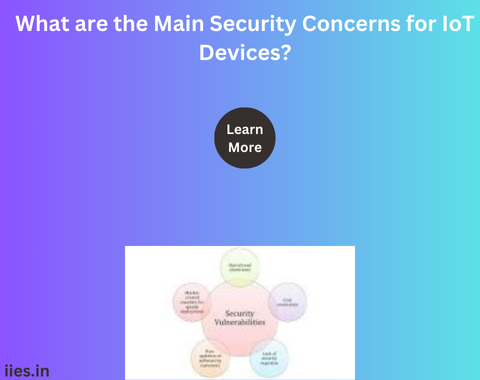
In an era dominated by technological advancements, the Internet of Things (IoT) has emerged as a transformative force, connecting devices and systems to enhance efficiency, convenience, and automation. From smart homes and wearable devices to industrial machinery and healthcare systems, the proliferation of IoT has undeniably ushered in a new era of connectivity. However, with this interconnected landscape comes a pressing concern: the imperative of IoT security. This article explores the significance of securing IoT devices and the potential consequences of overlooking this critical aspect of our connected future.
The Internet of Things refers to the network of interconnected devices capable of exchanging data and information seamlessly.
These devices, equipped with sensors, actuators, and communication modules, enable real-time data collection, analysis, and response. The scope of IoT applications is vast, encompassing smart homes, smart cities, healthcare, agriculture, industrial automation, and more. As the number of connected devices continues to surge, so does the need for robust security measures to protect against potential threats.
The Vulnerabilities of IoT Devices
While the benefits of IoT are undeniable, the interconnected nature of these devices renders them susceptible to a myriad of security threats. One primary vulnerability lies in the sheer diversity of IoT devices, often manufactured by different vendors with varying levels of security protocols. Many IoT devices have limited computational resources, making it challenging to implement sophisticated security features. Additionally, the constant influx of new devices and the rapid evolution of technology make it difficult to keep pace with emerging threats.
Security Breaches and Consequences
The consequences of inadequate IoT security are severe and far-reaching. Security breaches in IoT devices can lead to unauthorized access, data theft, and even the compromise of critical infrastructure. In a worst-case scenario, cyber attackers could exploit vulnerabilities in connected devices to launch large-scale attacks, disrupting essential services and causing widespread chaos. The infamous Mirai botnet attack in 2016, which exploited insecure IoT devices to launch a massive distributed denial-of-service (DDoS) attack, serves as a stark reminder of the potential repercussions of lax IoT security.
Data Privacy Concerns
IoT devices often collect and transmit vast amounts of sensitive data, ranging from personal information to real-time location data. In the absence of robust security measures, this data becomes an attractive target for cybercriminals. Unauthorized access to personal information can lead to identity theft, financial fraud, and invasion of privacy. Furthermore, compromised IoT devices can be manipulated to spy on individuals, posing significant ethical and legal concerns. Ensuring the privacy and security of user data is paramount to building and maintaining trust in IoT technologies.
The Role of Standards and Regulations
Recognizing the urgency of IoT security, governments and industry bodies worldwide are actively working to establish standards and regulations. These frameworks aim to define security requirements for IoT devices, encourage the adoption of best practices, and hold manufacturers accountable for ensuring the security of their products. Compliance with these standards not only enhances the overall security posture of IoT devices but also fosters interoperability and ensures a more cohesive and resilient IoT ecosystem.
Securing the Supply Chain
The security of IoT devices extends beyond the end-user level to encompass the entire supply chain. From the design and manufacturing phase to distribution and deployment, each stage presents potential vulnerabilities that could be exploited by malicious actors. Implementing security measures throughout the supply chain, such as secure coding practices, supply chain integrity checks, and secure boot processes, is essential to mitigate risks and build a solid foundation for IoT security.
The Need for User Awareness and Education
As IoT devices become ubiquitous in our daily lives, fostering user awareness and education is crucial. Many security breaches occur due to user negligence, such as using default passwords, failing to update firmware, or connecting devices to unsecured networks. Educating users about the potential risks and best practices for securing their IoT devices can significantly contribute to overall cybersecurity efforts. Manufacturers, service providers, and policymakers must collaborate to create awareness campaigns and educational resources to empower users to take an active role in safeguarding their connected environments.
The Evolving Landscape of Cyber Threats
The dynamic nature of cyber threats necessitates a proactive and adaptive approach to IoT security. It is imperative for the cybersecurity community to stay ahead of emerging threats, continuously update security protocols, and collaborate on threat intelligence sharing. Employing advanced technologies such as artificial intelligence and machine learning for anomaly detection and behavior analysis can enhance the ability to detect and respond to evolving cyber threats in real time.
In conclusion, the proliferation of IoT devices has ushered in a new era of connectivity and convenience, but it has also brought forth unprecedented security challenges. The imperative of IoT security cannot be overstated, considering the potential consequences of security breaches, data privacy violations, and the exploitation of interconnected devices for malicious purposes. As we embrace the promise of a connected future, it is incumbent upon manufacturers, policymakers, and users alike to prioritize and invest in robust IoT security measures. By doing so, we can unlock the full potential of IoT technologies while ensuring a secure and resilient foundation for the interconnected world of tomorrow.
Indian Institute of Embedded Systems – IIES